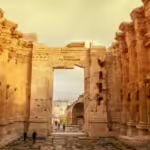The Temple of Poseidon stands as a timeless monument, gracefully perched at Cape Sounion, about 70 kilometers south of Athens. This architectural marvel is not merely a remnant of ancient civilization; it is a site steeped in lore and mythology that encapsulates the essence of Greek culture. As one gazes upon its majestic columns, it becomes evident that this temple was built to pay homage to Poseidon, the formidable god of the sea. This sacred space is a bridge connecting humanity with nature, art, and spirituality, showcasing the rich tapestry of ancient Greek life.
Architectural Splendor of the Temple of Poseidon
The Temple of Poseidon boasts an architectural style that captivates the imagination and reflects the sophistication of ancient Greek builders. Its construction during the fifth century BC coincided with the great Acropolis of Athens, indicating that this locale was an important cultural and religious hub.
A Testament to Ancient Engineering

The design of the Temple of Poseidon is a stunning example of classical architecture, featuring grand columns made of gleaming white marble, which has endured the test of time against the elements.
These columns are not just functional; they boast intricate details that speak to the artistry of their creators. Each column stands tall, representing strength and stability, while also evoking the power of the sea that Poseidon governs. The temple’s layout aligns perfectly with the horizon, allowing visitors to witness breathtaking sunsets over the Aegean Sea, enhancing its spiritual allure.
Symbolism in Architecture
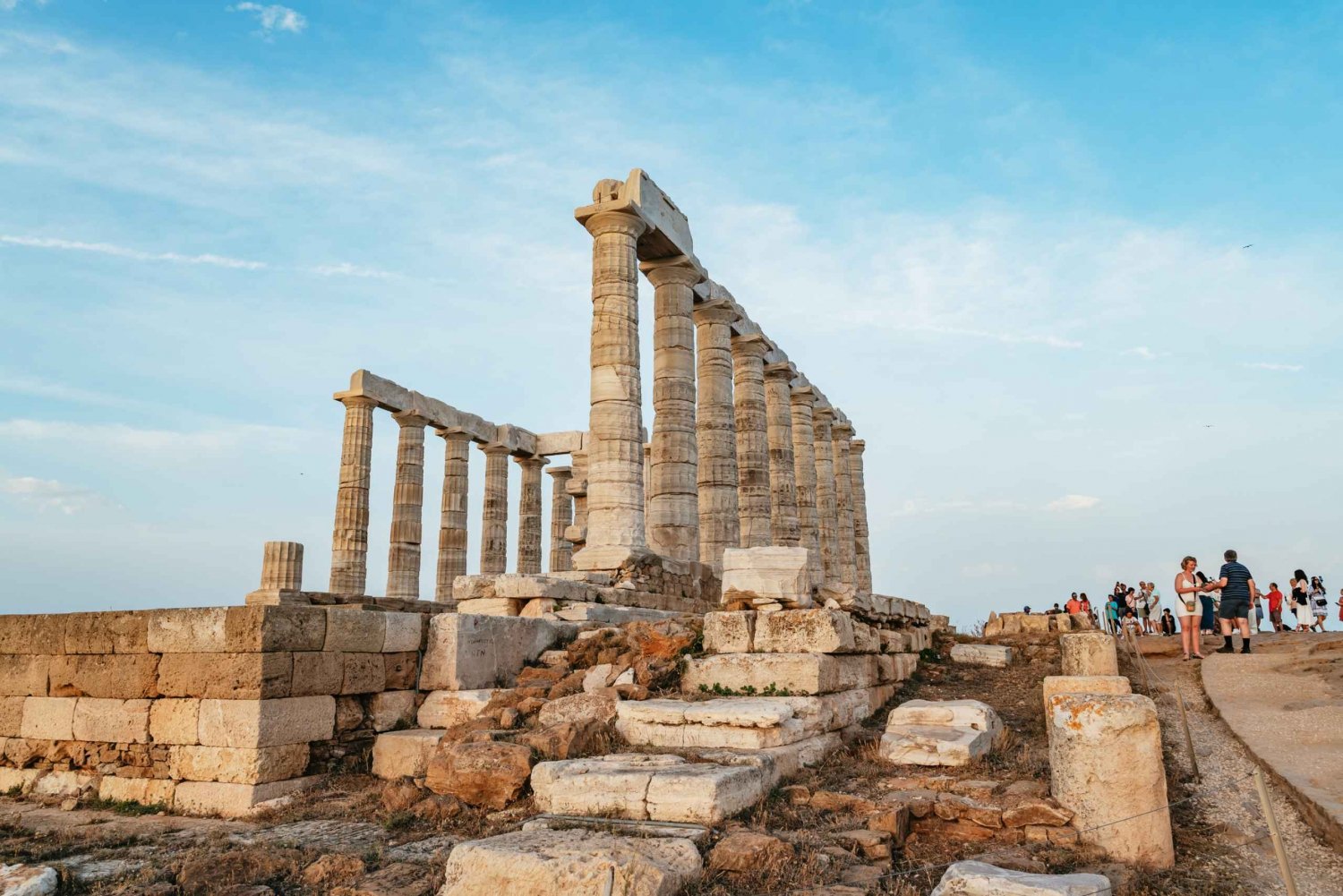
Every aspect of the Temple of Poseidon carries symbolic weight. The choice to dedicate this temple to Poseidon illustrates the importance of the sea to ancient Greeks, whose lives were intricately tied to maritime activities.
In addition, the temple’s elevated position on a cliff serves as a metaphor for divine oversight. It symbolizes how gods watched over human affairs from a distance, governing not only the oceans but also the fortunes of those who traversed them. This connection between the earthly realm and the divine elevates the temple beyond mere stonework; it becomes a testament to the beliefs and values of a society that revered its deities.
An Artistic Legacy
Artistic elements within the Temple of Poseidon, such as friezes and sculptures, further enrich its cultural significance.
These artworks depict various mythological scenes, showcasing the narratives that shaped ancient Greek identity. Through these artistic expressions, the ancients communicated their understanding of the cosmos and their relationship with the divine. This dialogue between art and spirituality continues to resonate, inviting modern visitors to reflect upon their own beliefs and place in the world.
The Mythos Surrounding the Temple of Poseidon

The Temple of Poseidon is deeply intertwined with myths and legends that have been passed down through generations, enriching the experience of those who visit this awe-inspiring site.
Legends of Poseidon
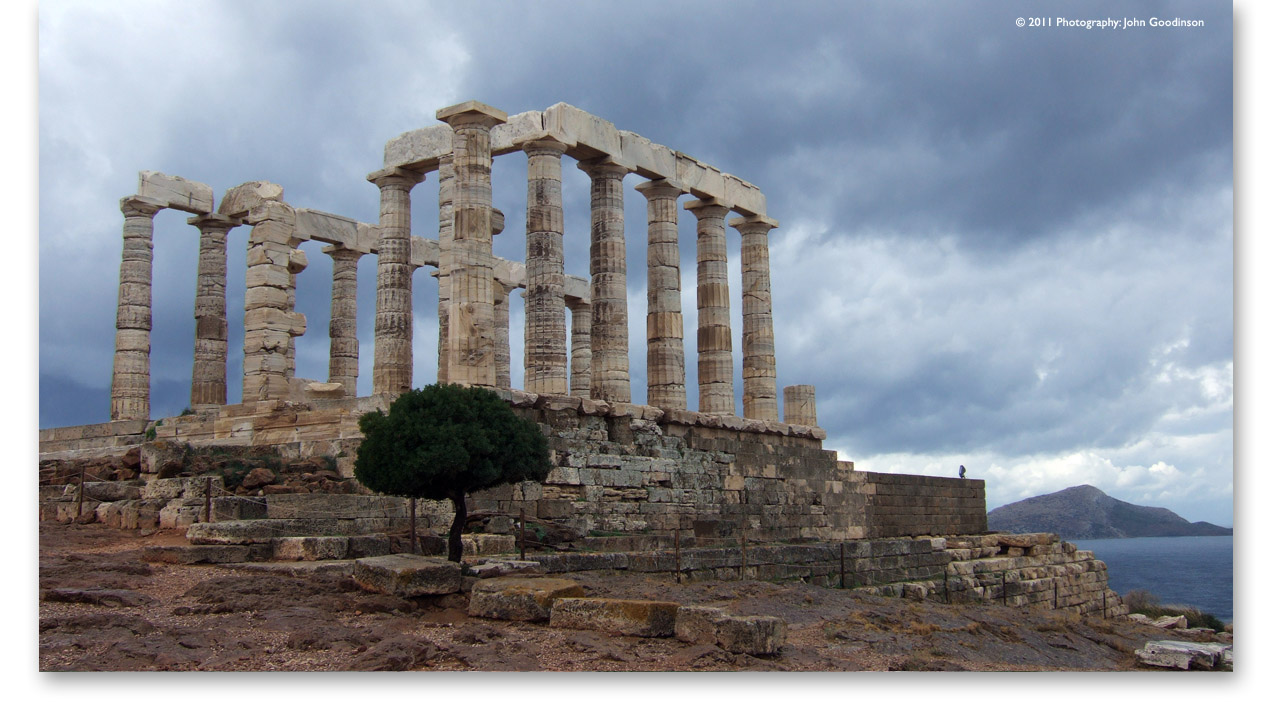
According to mythology, Poseidon was one of the twelve Olympian gods and ruled over the seas. He was known for his tempestuous nature, capable of both nurturing and destructive powers.
The tales of his wrath can be traced back to the very waters that lap against the shores of Sounion. Many sailors would come to the temple to offer sacrifices and seek favor before embarking on perilous journeys. The belief that Poseidon could hear their prayers from this sacred ground speaks volumes about the motivations of these ancient mariners.
The Connection with Aegean Culture
The temple’s location along the Aegean coast makes it an integral part of the region’s cultural heritage. The Aegean Sea has historically served as a critical passage for trade and exploration, making it essential for the development of early Greek civilization.
Often, voyages across these waters were fraught with peril, leading seafarers to rely on the benevolence of Poseidon. The temple not only became a center for worship but also a gathering space where people shared stories of the sea, reinforcing cultural bonds and collective identity.
Treasures of the Depths
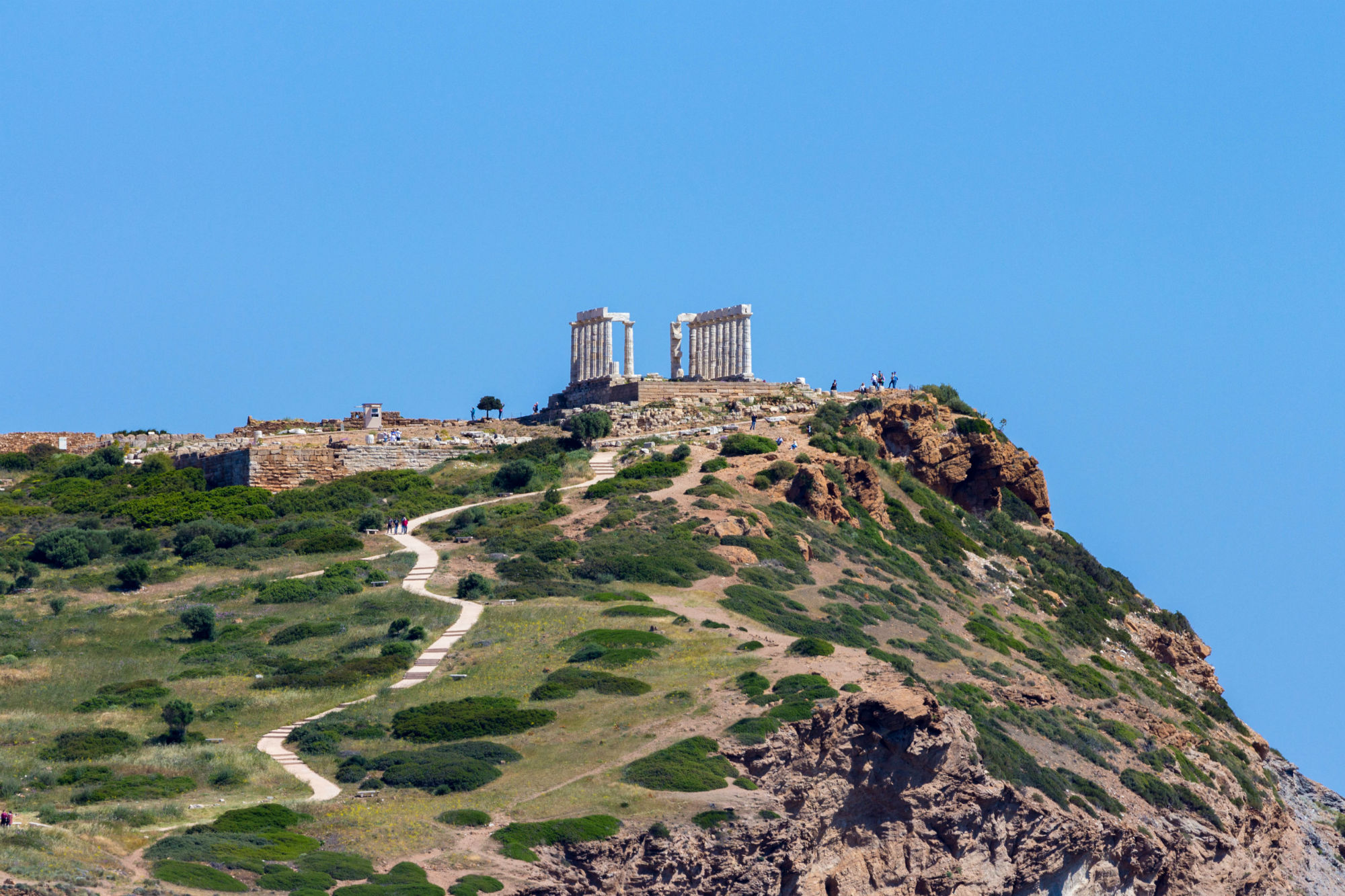
The ocean has always been a source of inspiration and mystery, and many tales surrounding the Temple of Poseidon include treasures cast into the depths by those seeking favor from the deity.
These narratives captivated the imaginations of locals and travelers alike, giving rise to stories of lost ships laden with riches. Such legends persist today, embodying the allure of adventure and the unknown — themes that resonate with the human spirit.
The Journey to the Temple of Poseidon

Visiting the Temple of Poseidon is more than just a trip to a historical site; it is an immersive journey that encompasses the glorious natural beauty of the Athens Riviera.
Scenic Routes
Travelers often embark on a picturesque drive along the stunning coastline, where the striking contrast of azure waters against rugged cliffs creates a breathtaking backdrop.
As you navigate winding roads lined with ancient olive trees and vibrant wildflowers, anticipation builds with each passing moment. The sense of wonder intensifies as the temple comes into view, perched majestically atop its rocky promontory, offering panoramic views of the sea below. This scenic approach enhances one’s appreciation for the site’s beauty and significance.
Experiencing Nature and History

Upon arrival at the Temple of Poseidon, visitors are met with a tranquil atmosphere that invites contemplation.
Here, amidst ancient stones, there lies a unique opportunity to connect with nature and the historical narrative woven into the fabric of the land. The sound of waves crashing against the rocks serves as a soothing soundtrack, creating a harmonious blend of history and the natural world.
This experience allows individuals to reflect on the legacy of the temple and its role in shaping the cultural landscape of ancient Greece. As you walk among the ruins, you can almost hear the echoes of prayers offered to Poseidon, reminding us that this sacred space connects generations through time.
Immersion in Local Culture
The journey does not end at the temple itself. Visitors can immerse themselves in the local culture by exploring nearby fishing villages and enjoying traditional Greek cuisine.
Sampling fresh seafood dishes prepared with locally sourced ingredients is a delightful way to engage with the culinary traditions that have flourished in this coastal region for centuries. Sharing a meal with locals fosters a deeper understanding of their way of life, enriched by the same sea that once inspired the ancients.
The Spiritual Essence of the Temple of Poseidon

Beyond its architectural grandeur and mythological connections, the Temple of Poseidon resonates with spiritual significance that transcends time.
Sacred Spaces of Worship
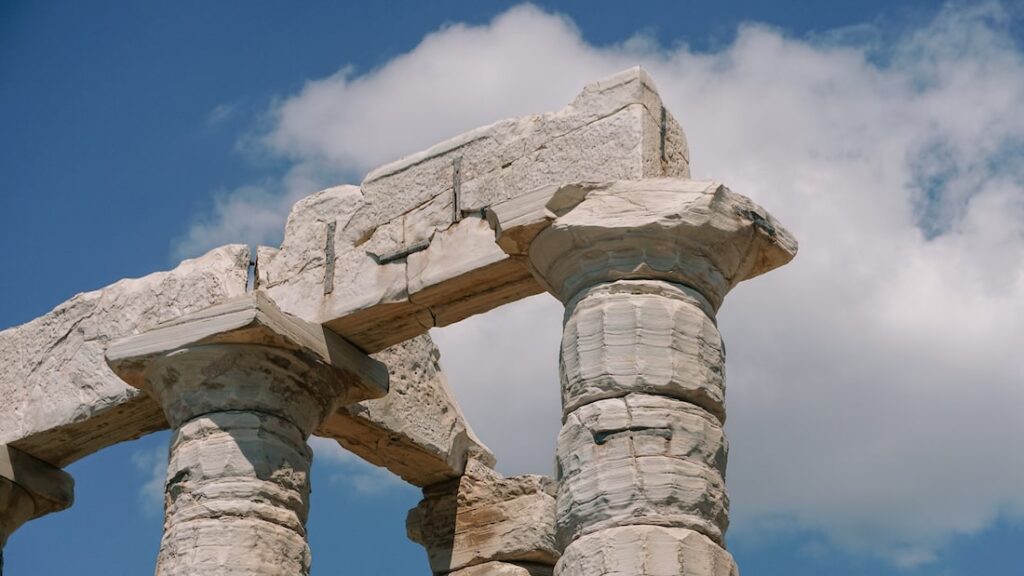
For the people of ancient Greece, temples were not merely buildings; they were sacred spaces imbued with the presence of the divine.
The Temple of Poseidon served as a sanctuary where individuals could seek solace and commune with the powerful forces governing the ocean’s vastness. Standing among the columns, one can feel the weight of history and the reverberations of countless devotions echoing through the ages.
A Reflection of Human Experience

As we delve into the spiritual dimensions of the Temple of Poseidon, we recognize that it mirrors the complexities of human existence.
The duality of Poseidon’s nature — both creator and destroyer — represents the struggles faced by humanity throughout history. Just as the sea can nurture life or unleash chaos, our own lives are a balancing act between hope and despair, joy and sorrow. The temple thus becomes a poignant reminder of our interconnectedness with nature and the divine.
Reverberations of Faith

Visitors to the Temple of Poseidon often find themselves pondering the enduring power of faith.
It is intriguing to consider the hopes and dreams of those who stood in this very spot centuries ago, invoking divine favor for safe passage over turbulent waters. Today, as we stand beneath the remnants of this magnificent structure, we too grapple with our challenges, searching for meaning and guidance amid the tumult of life. The temple’s enduring presence encourages reflection on our individual and collective journeys, instilling a sense of humility and reverence for the forces shaping our lives.
Conclusion
The Temple of Poseidon is not simply a relic of ancient architecture; it is a potent symbol of humanity’s enduring quest for understanding and connection with the divine. From its architectural splendor to its rich tapestry of myths, it invites us to explore the depths of our own beliefs and experiences.
As we walk through its hallowed grounds, we are reminded of the stories etched in stone — tales of sailors seeking grace, lovers basking in the beauty of sunsets, and the ever-reverberating voices of the past. Visiting the Temple of Poseidon is an invitation to not only appreciate historical significance but also to embrace the profound connections that bind us to nature, culture, and spirituality. Its legacy continues to inspire and resonate, reminding us that we are all part of a larger narrative that transcends time.
✉️ Stay Connected — Subscribe for Weekly Updates
Discover timeless stories, practical wisdom, and beautiful culture — delivered straight to your inbox.
*We only share valuable insights — no spam, ever.





